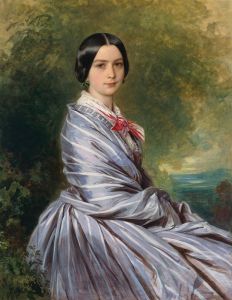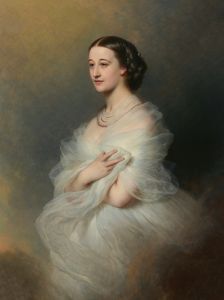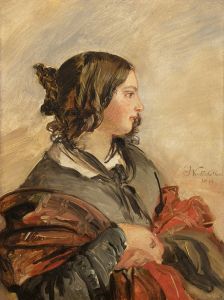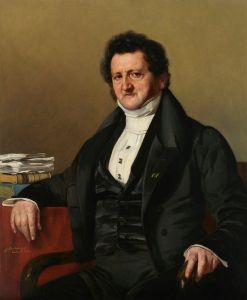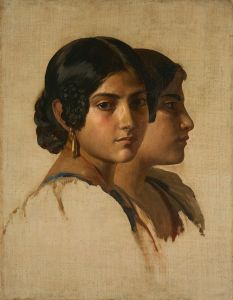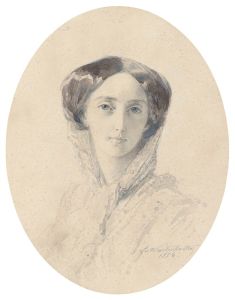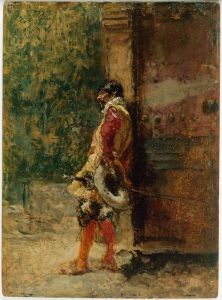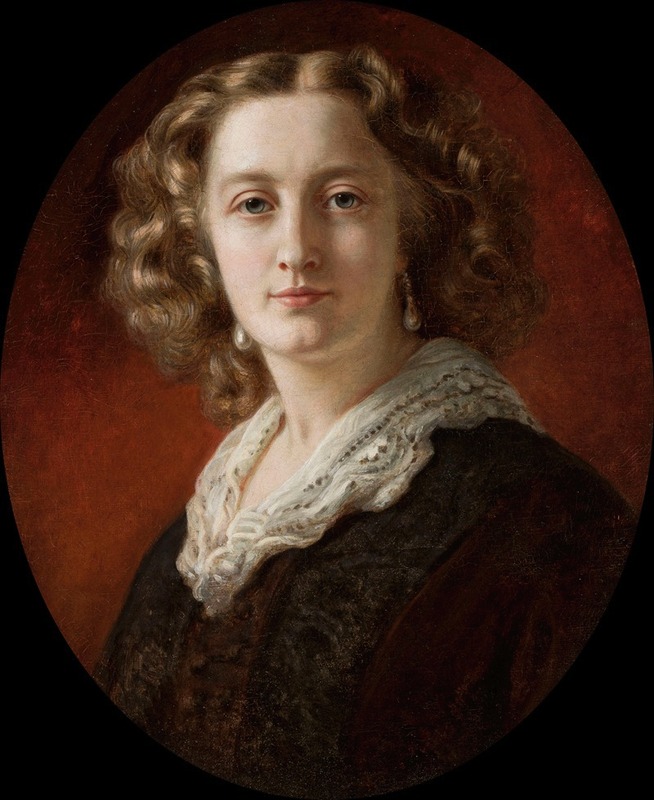
Portrait of Zofia Odescalchi née Branicka
A hand-painted replica of Franz Xaver Winterhalter’s masterpiece Portrait of Zofia Odescalchi née Branicka, meticulously crafted by professional artists to capture the true essence of the original. Each piece is created with museum-quality canvas and rare mineral pigments, carefully painted by experienced artists with delicate brushstrokes and rich, layered colors to perfectly recreate the texture of the original artwork. Unlike machine-printed reproductions, this hand-painted version brings the painting to life, infused with the artist’s emotions and skill in every stroke. Whether for personal collection or home decoration, it instantly elevates the artistic atmosphere of any space.
Franz Xaver Winterhalter's Portrait of Zofia Odescalchi née Branicka is a 19th-century oil painting by the renowned German portraitist Franz Xaver Winterhalter. The artwork depicts Zofia Odescalchi, born Zofia Branicka, a member of the prominent Polish noble Branicki family. Zofia was married to Prince Livio Odescalchi, a member of the Italian aristocratic Odescalchi family, which traces its lineage to the papal nobility. The portrait is an example of Winterhalter's signature style, characterized by its elegance, attention to detail, and the idealized portrayal of aristocratic subjects.
Winterhalter was a highly sought-after portraitist during the 19th century, known for his ability to capture the refinement and grandeur of European nobility. His works often emphasized luxurious fabrics, intricate details, and a sense of grace, which made him a favorite among royal courts and high society. The Portrait of Zofia Odescalchi née Branicka exemplifies these qualities, showcasing Zofia in a sophisticated pose and attire that reflect her status and the fashion of the time.
The exact date of the painting is not definitively documented, but it is believed to have been created during Winterhalter's peak period, likely in the mid-19th century. During this time, Winterhalter was active across Europe, working for various royal families and aristocrats, including those in France, England, and Austria. His ability to travel extensively and cater to an elite clientele solidified his reputation as one of the foremost portrait painters of his era.
The painting is notable for its depiction of Zofia's refined features and the luxurious textures of her clothing, which are rendered with meticulous detail. Winterhalter's use of light and shadow enhances the three-dimensionality of the figure, while his soft brushwork contributes to the overall elegance of the composition. The portrait not only serves as a representation of Zofia Odescalchi but also as a testament to Winterhalter's mastery in capturing the opulence and sophistication of 19th-century European aristocracy.
The current location of the painting is not widely documented in public records, and it is unclear whether it resides in a private collection or a museum. Winterhalter's works are held in numerous prestigious institutions worldwide, and his portraits continue to be celebrated for their artistic and historical significance.
This painting remains an important example of Winterhalter's contribution to the art of portraiture and provides insight into the cultural and social milieu of the European elite during the 19th century.






